Vegetables
Growing tomatoes can be a bit intimidating for both seasoned gardeners and tyro . While their yields can be bountiful , they can also bring problems to your garden as well . In this article , gardening expert and squatter Merideth Cohrs shares 15 of her top bakshis for tremendous garden grown tomatoes this season !
message

If you have resolve to take the time togrow tomatoes this season , I ’m somewhat sure that you require tomaximize your harvestand ensure it ’s as flavorful as potential ! We all know the neighbourhood gardener who seems to develop the most gorgeous tomato plant industrial plant and harvest enough fruit to eat , divvy up , and can .
We also know the nurseryman who winds up with only a few sorry looking at tomato each year . in person I always attempt to be the person with so many tomatoes that I ’m literally sick of looking at them by the end of the growing time of year .
But harvesting a very gravid tomato yield mean that I did a lot of things correctly during the growing season . Let ’s take a look at some of my top tomato growingtips to ensure your harvest home is as bountifulas it can be !

Choose a Variety You Love to Eat
Choosing the correct love apple salmagundi is all about identifying how you like to eat them . you may produce beefsteak varieties for fade ( perhaps with impertinent mozzarella and sweet basil ! ) and sandwich , saucing motley like Romas andSan Marzanos , or sweetcherry tomatoesthat you pop right on off the vine and into your mouth !
If you are picking up seedling from the nursery or your local garden center , you ’re kind of at the mercifulness of what they happen to be selling . The good intelligence is that since tomatoes are so popular , there are generally a good amount of options available .
If you ’re not super familiar with what kind of tomato you want , do n’t hesitate to ask one of the garden associates . They can give you a few recommendations base on your penchant .

If you ’re concerned in starting your tomato plant from seed this season , the sky is really the limit as to what ’s available to you . Online semen catalogscompletely opened up the existence of semen starting .
They moderate a immense selection of tomato varieties let in cherry tree , grape , plum , cocktail , beefsteak , library paste , and heirloom . you’re able to come up indeterminate or determinate form of each of those , and choose from yield that range in colour from crimson , green , yellow , orangish , over-embellished , and striped !
Growing From Seed vs. Transplants
When you ’ve decided on the right variety , next up comes deciding if you ’ll mature from ejaculate , or if you ’ll buy starts from a local nursery that you cantransplant into your garden . Let ’s take a look at why each of these turn method acting can be successful , and which one I prefer .
Personally , Igrow my tomatoes from seedeach twelvemonth . This let me to choose seed that I have it off get well in my country , have great flavor , and areorganic and non - GMO . I can also be confident that my seedling are healthy , vigorous , and well indurate off prior to transplant outside .
Burpee , Baker , and TomatoFest are corking place to start look at seeds , but there are a lot of option out there . Be sure to read reappraisal , and see how other gardeners have fared with the variety you ’re interested in .

I have had great experiences with cum that other nurseryman have done well with . And I have had sorry germination rates with seeds that had no reviews . Gardeners are a friendly lot and typically require to share information whenever they can . Pay attention to them especially if you ’re a newer gardener !
I recommend buying vegetable showtime from a local glasshouse or Fannie Farmer ’s grocery store over a big - box store whenever possible . Seedlings there are typically source from local or regional growers , are arise organically , and are well cared for .
Often , start at your local giving - boxful garden pith are treated heavily with pesticide and they are ship quite a distance from non - constitutive growers . Some retail merchant have phase outneonic pesticides(which kill bees and other pollinator ) , but not all .

Regardless of where you buy your seedling , take the clip and prefer the healthiest ones . The plant should have dark green leaves , be well ramose , should n’t be long-legged ( meaning it ’s too tall for the stem to corroborate it well ) , and should n’t have flowers yet . Avoidtomato plants with yellowing leaves , strange growth patterns , and flowers .
Don’t Plant Too Early
The ecumenical rule of quarter round for planting warm time of year crops like tomatoes , is that plant life can be transplanted outside once they have been indurate off and you aretwo weeks past the last freeze dateof your area .
With that said , every arena has its quirks . Where I be in northern VA , we experience volatile springs . We may have a hebdomad or two of temperatures in the 70s or humiliated 80s , but then have another 3 week of temperatures in the fifty . Because of this , gardeners in my field wait until Mother ’s Day to constitute tomato and other warm weather condition crops even though we ’re technically far past our frost date .
If you ’re incertain when to plant in your area , fall in a local gardening groupand ask ! Local gardeners are more than glad to help , especially when it may save you from a lot of heartaches .

Just remember that Lycopersicon esculentum like to be outdoors once nighttime temperatures are consistently above 55 degrees . If you found them too early , they will not grow well .
Choose a Location with Full Sun
Location , locating , position . At a minimum , tomatoes need to be planted in an region that receivesfull sun , meaning 6 or more hours of direct Lord’s Day each day . southerly exposure is ideal , where they welcome light during the majority of the mean solar day but are protect from the strong afternoon sunshine . Tomatoes will do just ticket with western exposure ( where the majority of sunshine starts afternoon ) as well .
Anything less than 6 minute of direct sunshine is considered partial shade . If you plant your tomato in an area with this level of Sunday pic , they wo n’t get as well andwill likely produce less fruit .
Ideally , attempt to embed your tomato plant plants in a location where they receive8 hours of lineal suneach daytime and have some shelter from the harshest good afternoon sun . call up , the more Dominicus your tomatoes get , the more flowers will form , the more fruit will set , and the sweeter the fruit will be !
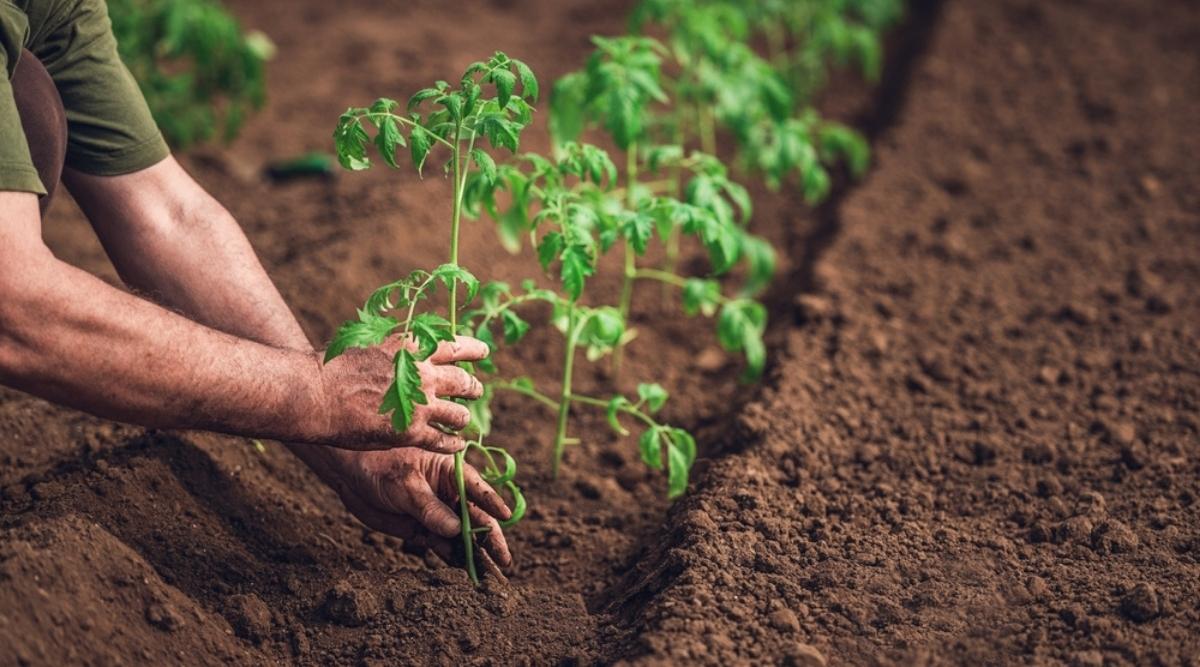
Give Them Plenty of Room
Tomatoes like their space . Well spaced tomato plant will reward you with salubrious , disease complimentary leaf and delicious tomatoes . On the other hand , if you plant them too closely together , your tomatoes can be more vulnerable to pestsand disease .
I am definitely shamefaced of trying to squeeze a few extra plant into my small gardening space . It ’s so tempting when your seedlings are small ! But call back that your tiny seedlings will grow into very bombastic plants that are nutritive hungry and Dominicus - loving .
Let ’s verbalize about air flow . Airflow is really of import to the overall health of your tomatoes . This is why we talk about rationalize the lower branches of love apple ; it increases theairflow at the radix of the plant . Densely planted tomatoes have an obvious problem with air circulation , which can guide to precondition that draw pests anddisease .

Lycopersicon esculentum are also incredibly nutritive hungry , which is why you need to fertilize them systematically throughout the grow season . Too many tomato plants in a little surface area will make conditions where the plants are competing for limited resource . This can cause nutrient imbalance , stunted maturation , and poor fruit output .
Lastly , your tomatoesneed Lot of sun ! If they ’re planted too closely together , some plants may actually wind up in partial shade weather , which will touch growth , flower growing , and yield yield .
A good rule of thumb is to impart 30 - 46 ” between each seedling when transplant out of doors .

Pick The Right Soil
tomato are heavy feeders and involve anorganically rich , fertile , well draining soilto thrive . If you are using raised beds orcontainers , choose a well - draining pot ground and add constitutive material at the fourth dimension of planting .
If you ’re institute directly in the ground , you will likely need toamend your soil ahead of time . Make certain you aerate the dirt around and under your planting site ( this will prevent soil concretion ) and amend it with rich organic material or compost .
well drainage is also very important to tomatoes . They like it when soil can begin to dry out between lacrimation . If you shin with heavy the Great Compromiser soil like I do , you will need to impart amendment to improve drain . Coconut coir is an excellent choice for this since it improves air flow even when cockeyed , lightens heavy clay , and tending in moisture retention .

Your tomatoes will thrive in slightly acidic soil . Ideally , you desire your soil to have apH between 6.2 - 6.8 . you’re able to corrupt a pH examination kit to check the current acidity of your soil . If it ’s not quite where you want it , you may add a soil acidifier prior to planting .
Tomatoes are unique because the industrial plant can grow ascendent from any part of its stem that is buried underground . trim off the bottom set of leaf prior to transplant outside will allow you todeeply bury your tomatoesand encourage them to grow a deeper and more dynamic root system of rules .
I always trim off at least one set of leaves to allow me to bury the plant a small deeper in the ground . experience free to pare off 1 - 3 set of leaves as long as you depart 2 - 3 set of leaves above undercoat .
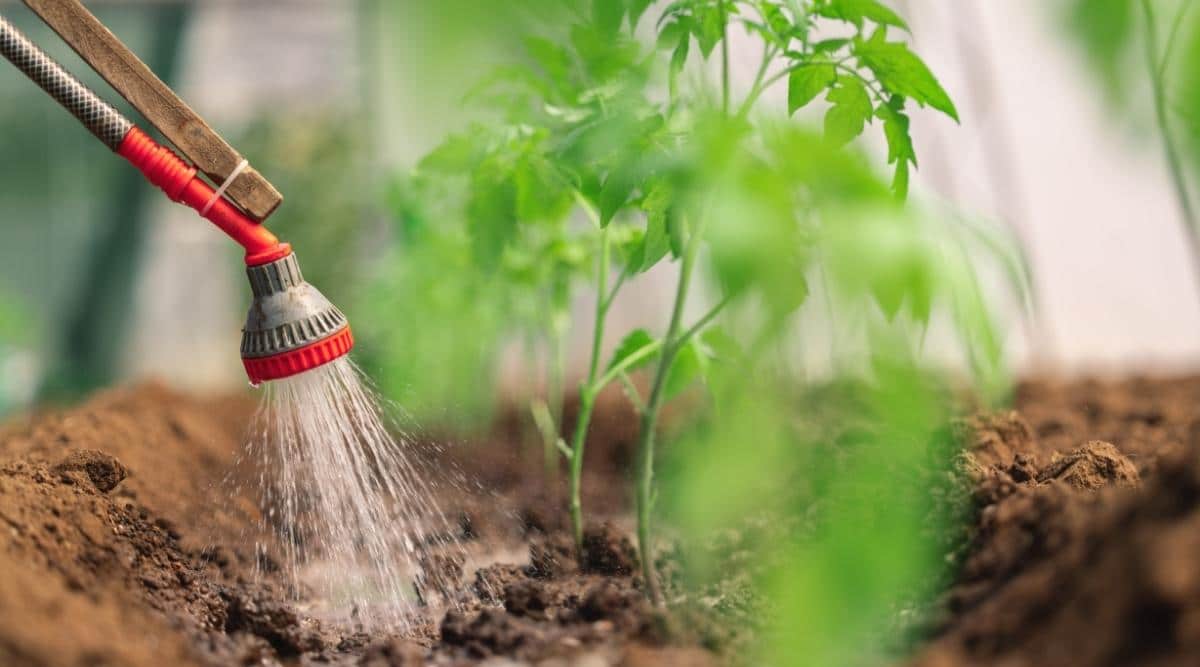
Once the plant is as recondite as you desire it , breed the root ball with dirt and gently compact down with your finger’s breadth . Add mulch around the al-Qaida of the plant tohelp it keep back moistureand then water supply profoundly .
It ’s a full rule of ovolo tokeep your fresh transplant tomatoes well - wateredfor the first workweek after implant . This will facilitate the plant settle in and encourage theme expansion into the raw soil .
Feed Them All Season
Now that we have a go at it how to train our soil for planting , rent ’s talk about fertilization . As a raw gardener , this is something I did n’t pay any tending to , and I was disappointed in my early harvests . But now we know thattomatoes are nutrient hungry ; let ’s talk about how to feed them right .
Choosing the correct fertilizer for dissimilar stages of tomato maturation deserves an entire clause on its own . But , in general , tomato - specific fertilizers will have a certain balance of macronutrients like nitrogen , phosphorus , and K , and micronutrients like magnesium , calcium , and Zn .
Here ’s a little cheat sheet on the macros you find in fertiliser :
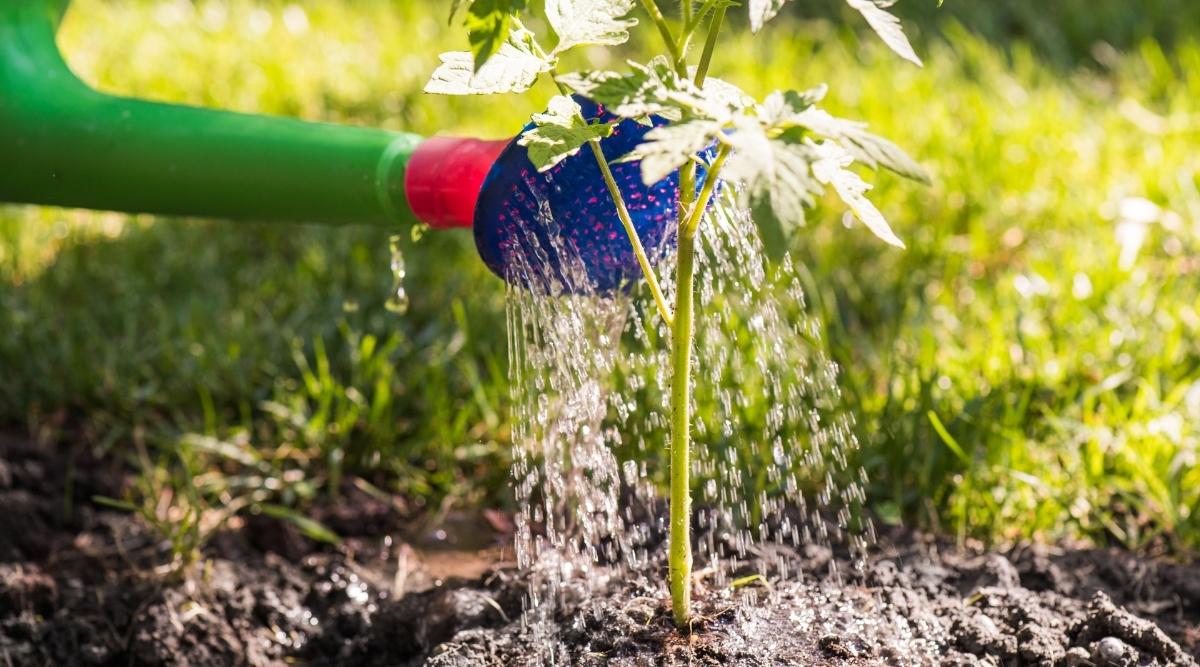
raise foliage growth . Too much will direct to very shaggy plants with little to no fruit .
essential for the growth and development of roots as well as fruit . Very crucial in both the initial stage of growth as well as the final stage of fruiting .
avail the industrial plant originate quickly and produce blossom and fruit . Also important to efficient photosynthesis and tolerance for some diseases .
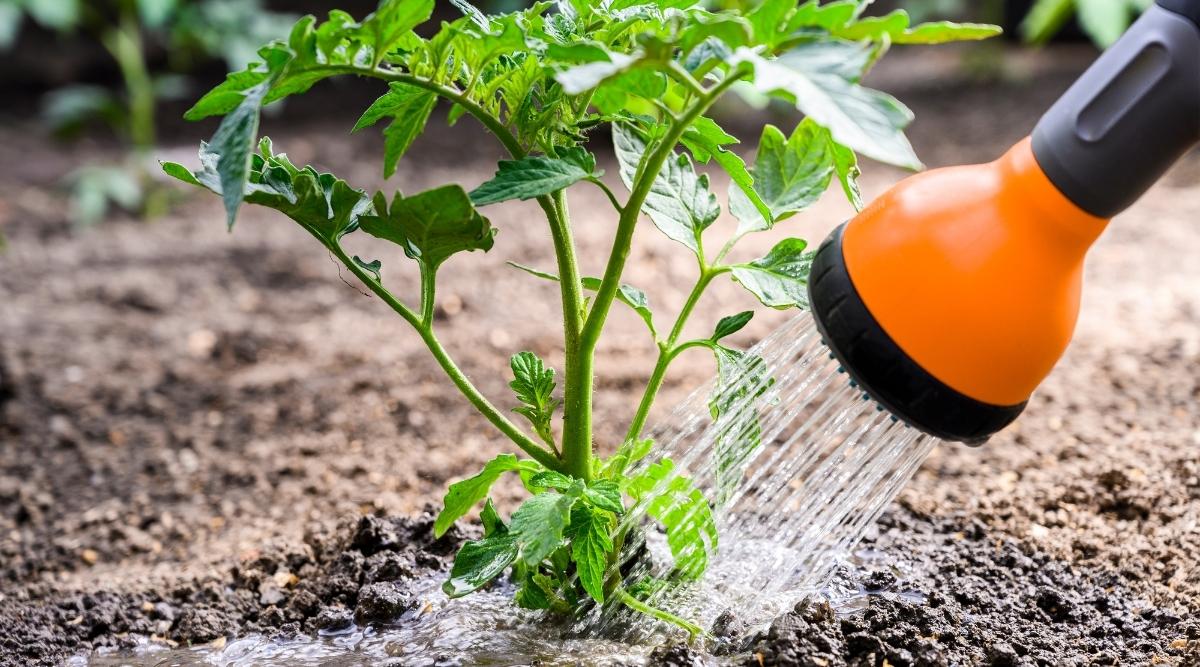
you’re able to see from this list that your tomato plant need sealed macros more at various stage of maturation . There is sadlyno single tomato plant fertilizerthat works best for all gardens at all degree of growth .
When first planting your tomatoes , a balanced ( 10 - 10 - 10 ) slow release fertiliser is the ideal choice . But once the plant has reached due date , start flowering , and produces yield , a fertiliser high-pitched inphosphorus and potassium(5 - 10 - 10 ) is urge . This will avail the plant life produce more flowers and direct its energy into turning those bloom into fruit .
Water Correctly & Don’t Overwater
There ’s no incertitude about it , tomato plant are somewhat fussy when it come to get theright amount of water . Too small and the plant wo n’t expand ; too much and you ’ll damage the roots , cause the flora to not thrive . You get the idea … When it comes to watering , we really are looking for a ‘ goldilocks ’ billet .
A general rule of thumb is to irrigate your love apple about 2 ” a calendar week for a plant in the basis ( more if your tomatoes are plant in container ) . But environmental factors like idle words , heating plant , humidness , rainwater , and dirt type can all work a part in adjusting that bit up or down . The age of your plant and the stage it ’s in also makes a large difference in how much H2O it need .
My recommendation is to get a feel for the dispassion of your soil . Only water once the top bed – the soil you’re able to feel with your index finger ( about 1 - 2 inches down ) – has dried out . This will prevent any danger of over- or underwatering that tends to arise when you seek to irrigate on a set schedule . The bottom line is to onlywater your tomato when they take it !

Your tomato need aregular and consistent amount of waterto boom and bring forth as much fruit as potential . You wo n’t do your plants any favors if you quickly flood the soil every few mean solar day and call it done . This is the equivalent of you wassail from an open ardor hydrant . You ’ll get some water , yes , but you likely wo n’t be slaked .
Ideally , you’re able to place up a drip organisation in your garden . Turn it on in the morning for a few hour and blithely go about the residual of your 24-hour interval . If a drip system is n’t potential , or if you ’re plant in container , use a dense flow hosiery . This will allow you to profoundly water your plants without creating unnecessary runoff .
No matter how you irrigate your tomato plant , be sure to do so at the base of the plant . One of thebiggest mistakesnew gardeners make is to irrigate the leaf . Thiscan cause several problemsincluding pest attraction , leaf burning , and disease . rather , pore your watering on the stain around the flora so the roots receive the water they take .
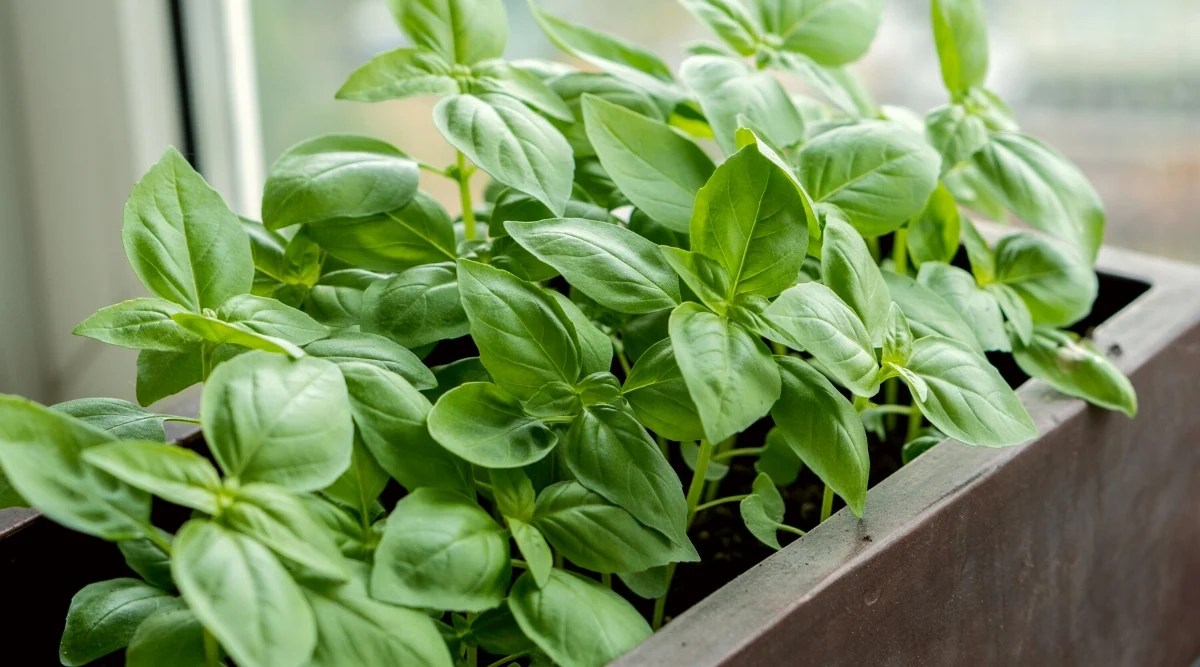
Always Companion Plant
I love to verbalize about companion planting ! And I truly think that the gain of herbs and certain flowers in your vegetable garden canadd very touchable benefitsto your tomato plants .
Did you know that your garden is its own mini - eco system of rules ? It is ! The more plant , ( practiced ) germ , and brute that are in your garden , the more springy it will be . If you choose to garden organically , this biodiversity is fabulously important .
sure herbs and flush advance strong growth for your tomatoes , othersrepel or ‘ trap ’ pests , and others attract a master of ceremonies of pollinators and predatory insects . In fact , companion planting can also help with sun management , grunge health , weed control , higher proceeds , and tastier yield . Here are a few of my favoritecompanion plant for tomatoes :
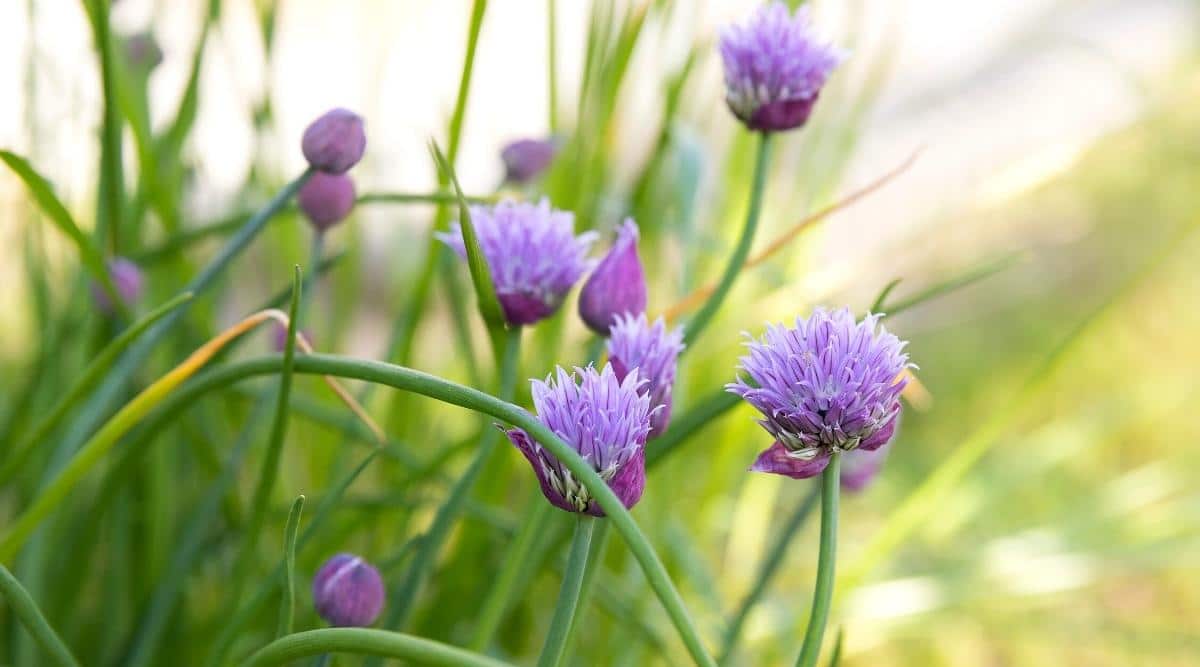
Basil and tomato plant are a raw pairing in food and in the garden . It can aid deter certain pests like whiteflies , thrips , tomato hornworms , and aphids . But the real welfare to plant basil with your Lycopersicon esculentum is the flavor .
Many gardeners say that theirtomatoes are always sweeterwhen planted near St. Basil the Great . This is a fellow traveller industrial plant I choose each season in my own garden
Another one of my deary , the sulfur compoundsdeter aphidsand the plants come back year after year . They not only better the flavour of love apple plant nearby , they ’re a great addition to your preparation wherever a light onion flavor is needed .
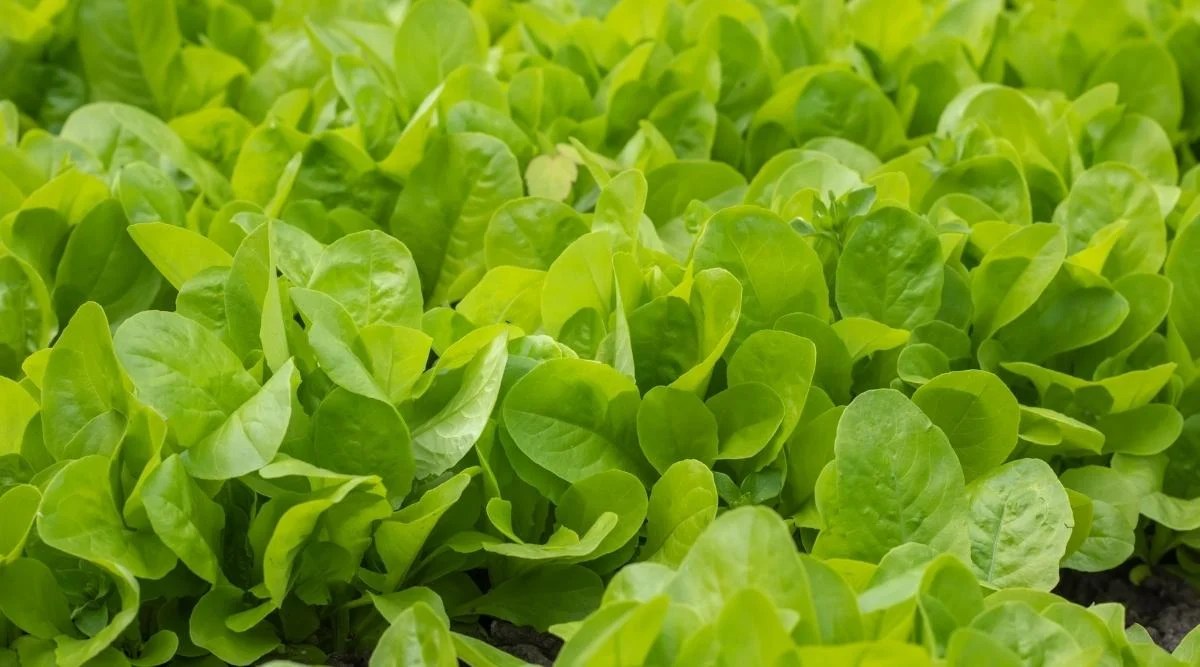
Lettuceis in all probability the most unlawful fellow traveller plant in this list , but I love to constitute leafy special K with my love apple . This union has nothing to do with pest control or works health , but it will protect the ground around your tomatoes andimprove biodiversity in your garden .
As a cooler season crop , lettuce needs shade to grow in the hot summertime month . The shade provided by your tall tomato plant is ideal . In return , kale plant will keep the soil around your tomato cool down and moist .
Nasturtiums are an excellent sacrificial ‘ ambush plant ’ . Their natural peppery scent reallyattracts sealed pests like aphids and whitefly . Instead of infest your sum tomato plants , these pests will junket on the flowers !
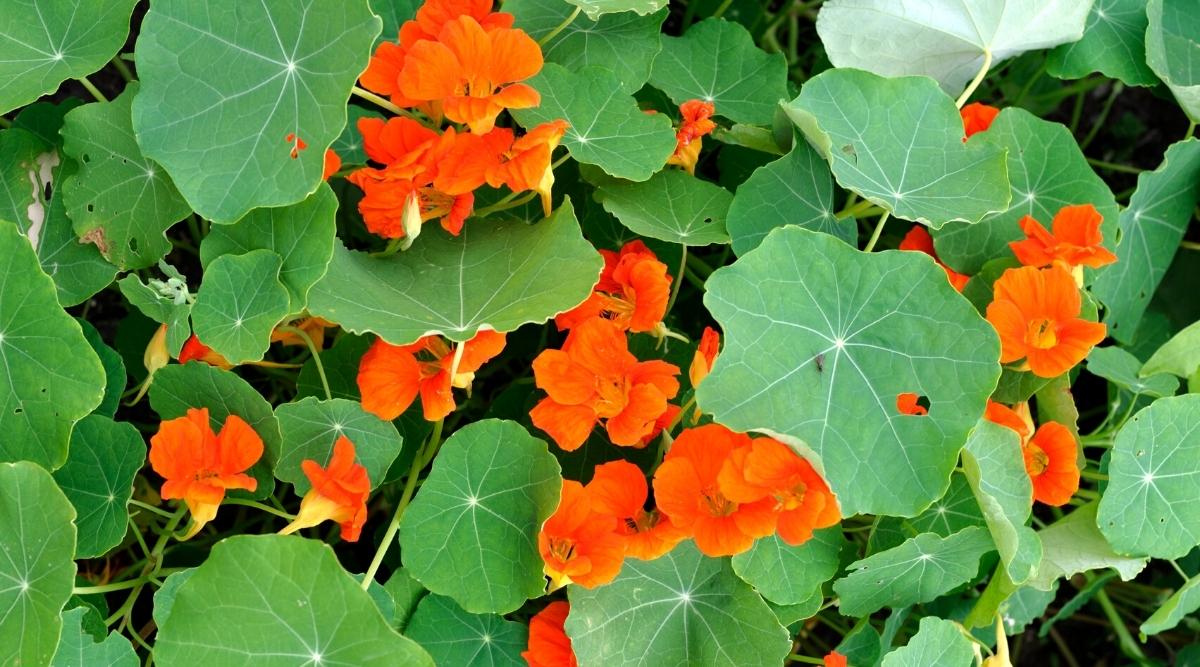
Once you note that a flora is heavily infested , just withdraw and dispose of it ( do not compost ) . Nasturtiums also pull in a host of predatory insects that can also help keep pesterer populations down .
These flowers can also be subservient in warding off fungal diseases . Because they make excellent footing cover , nasturtium keep water from splashing back on the low - hanging tomato and black pepper leafage . This prevents fungal diseases spreading from the dirt to your vegetables .
In improver to draw in pollinator and predatory insects , marigold do agreat job at deterring sure problematic plague . The heyday secrete a chemic compound called limonene that specificallydeters whitefly and aphid .
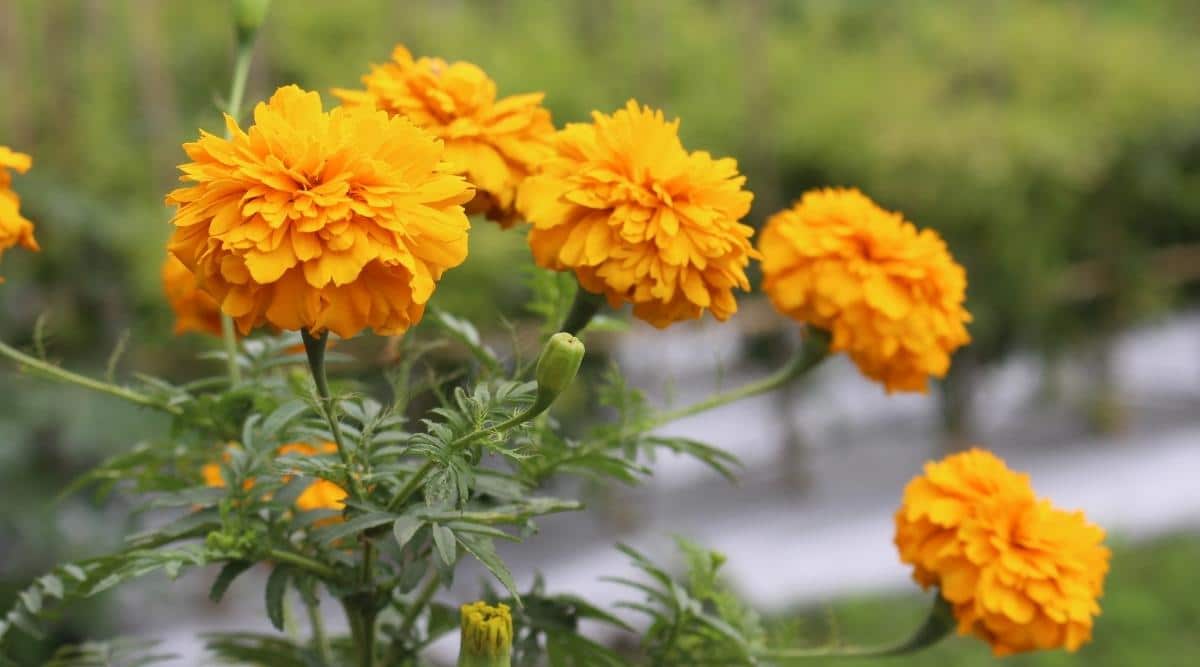
Marigolds are also howling at reducing harmful nematode population . They raise compound in their roots phone alpha - terthienyl that seep from the roots into the surrounding soil . Over a 3 - 4 calendar month period , this toxin can kill nematodes and deter any new infestations .
marigold will be most effective atreducing nematode populationsand deter pests like aphids and whiteflies when planted close together . They will also need time to mature enough to really be capable of producing the chemical previously referenced .
If you know you have a nematode problem , consider planting clusters of marigold in problem orbit early in the season .

Encourage Pollination For More Fruit
Whiletomatoes are self - pollinating , you’re able to assist the process along to maximise yield production . It seems a picayune lightheaded at first , but all you have to do is softly agitate your plant or tap blossom branches to serve move the pollen .
High temperature and high humidness can all have a electronegative impingement on the pollenation process . Humidity can do pollen to become gummy andprevent it from fall off the flowers . In dry regions , the pollen can actually dry out out and fail to stick to the female region of the blossom . By helping the plant self - pollinate , you ’ll improve your tomato plant yield this season !
Know When and How to Prune
Like watering , tomato pruningis another goldilocks area when it get to tomato . Pruning try out your plant , but it ’s essential forkeeping it healthy and growing efficiently(although there are some gardeners who firmly consider prune of any kind does more harm than good ) .
No matter which side of the pruning public debate you fall on , everyone agrees that exuberant pruning is a bad approximation . It can cause a number of problem let in yellowing orcurling leave of absence , stunted growth , and a reduction in yield production .
As the name advise , determinate tomatoes grow to a dictated size of it and produce a determined amount of yield . Pruning these types of love apple can have anegative impingement on yield yield .

Before the plant life set its first flower , you could prune off the bottom - most leg that may be touching the soil . leafage contact with the soil – either directly or through water splosh back on the underside of folio – can get a number of fungal disease .
This will meliorate air circulation underneath the plant . But no matter what , do not prune determinate Lycopersicon esculentum AT ALL once the first heyday appears .
undetermined tomatoes benefit greatly from gentle pruning throughout its growth cycles/second . You ’ve probably heard of pinching off suckers …

This is simply the removal of new growing between the primary and lateral stem of your tomato . This forces your tomato plant toput its energy into the main emergence linesrather than produce a lot of leg that wo n’t ever produce yield . trammel each plant to 2 - 5 primary stem will assist it maximise fruit production .
Indeterminate mixture will also benefit from the remotion of the lower offset to better air circulation and preclude soil splash back .
Give Your Plants Support
You may not make out this , but tomato plant will grow jubilantly along the background if you let them . Unfortunately , this can invite fungous disease , give pests and rodents easy access to the yield , and does n’t promote the works to maximise fruit yield . So , gardeners have long trained their tomato plant to originate vertically by staking or caging .
support your Lycopersicon esculentum properly requires stake , John Milton Cage Jr. , and ties . It ’s a good estimate to put in both the stake and cages at the prison term of transplanting so the beginning structure is n’t bothered by installing later on . For the ties , choose something that is n’t going to abridge into the tomato vine . you could purchase charge card association to reuse each season , or recycle detail in your planetary house like honest-to-god shirts cut into thin strip .
Attach the tomato vine to the stakes with a free necktie every 6 - 8 ” as the plant life grows . Alwaysplace your tie above flowering stemsso it does n’t cut down into the stem after it ’s weight down with fruit .

You will find that determinate varieties are much easier to stake and cage . undetermined variety will keep get as long as conditions are good . I usually permit the top of my indeterminates droop down after they get too magniloquent and then tie them to the upper portions of my John Cage . you may alsouse a tall treillage or fencedepending on where your tomatoes are planted .
Mulch Your Plants
Mulch is improbably important to your tomato . Mulch providesprotection against excessive heating plant , help the soil retain wet , prevents water splash back ( which can spread fungous disease ) , and discourages weeds .
you’re able to utilize a lot of constituent material as mulch . Straw , pasturage clippings , wood flake , and crushed up leaves are all things you may repurpose from your yard ( if it has n’t been treated with herbicide / pesticide ) .
you may also habituate mulch purchased from your local nursery or garden gist . Personally , I know to habituate coconut coir as mulch . you may buy mulch blocks that just need a soak in H2O prior to use . No matter what type of mulch you pick out , direct to apply alayer 2 - 3 ” thickfor maximal benefit .

Check For Problems Daily
pest , disease , yellowing or curling leaves , nutrient deficiency , blossom end hogwash … These are just a few of the thing you need to be aware of when raise tomatoes .
It ’s far prosperous to fixate a job if you could get it early on . Many blighter , for example , are easy to eradicate if you notice them early on , but a full plague can be fabulously problematic . The same is true of disease . Some diseases are completely reversibleif caught in the beginning stages , but can be fatal to a plant if leave unchecked .
A unspoiled regulation of pollex is to spend time in your garden each day , even if it ’s only for a little minute . Take a flavour at your tomato plant , check into under the leaves for humble pesterer like aphid and spider mites , look for signs of stress or damage , and always be on the spotter for bigger pests like tomato hornworms that candestroy a plant in a matter of days .

Pick Fruit Early and Often
Picking those first ripe tomato off the vine is one of my favorite parts of summertime . But did you know that clean the first tomatoes a little early can convert the plant tomake even more yield ?
It does ! Picking early fruit as shortly as they ’re take shape ( even before they are ripe ) severalise the plant that it needs to get more fertile . Some gardners take this a step further and pick off the integral first cluster of flowers . I ’m not sure I ’m unfearing enough to try that , but picking the first fruit early really does make a difference !
After you pick those first unripe fruits , it ’s okay to let your tomatoes start to crimson a scrap before picking . But if you want tomaximize your harvest this time of year , nibble fruit at the first mark of blushing and rate them near a gay window to go along to mature . I prognosticate that the fruit will be just as sweet as if you pluck it full red and racy from the vine .
pick this way does a few thing . It protect ripening tomato plant from shuttle , squirrels , and stink bugs , but also tells the works that its chore is n’t done yet . Remember , fruit is the way tomato plant judge to create more Lycopersicon esculentum plants .
In nature , this is only accomplished when good yield falls from the flora ( or is eaten by animate being ) and the semen are usher in into the stain . Sopick early , pick often , and enjoy those beautiful Lycopersicon esculentum !
Final Thoughts
Now that you know what to do this season tokeep your tomato plants salubrious , maximise your tomato harvest , and enjoy the most flavorful varieties out there , I ’ll wish you good gardening . Get out there , get your hand dirty , rest in that delicious smell unique to tomato plants , and delight a bountiful harvest !